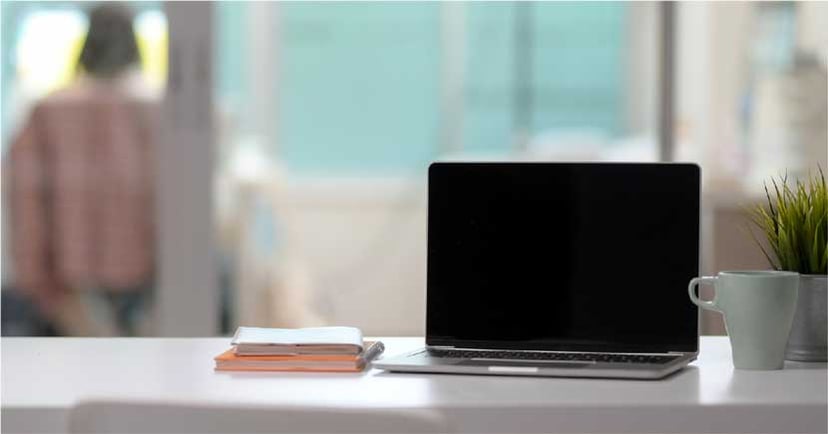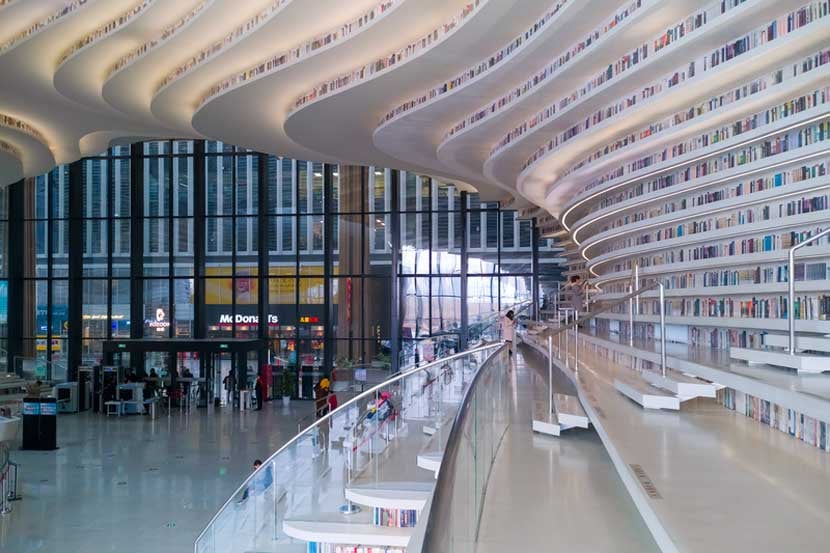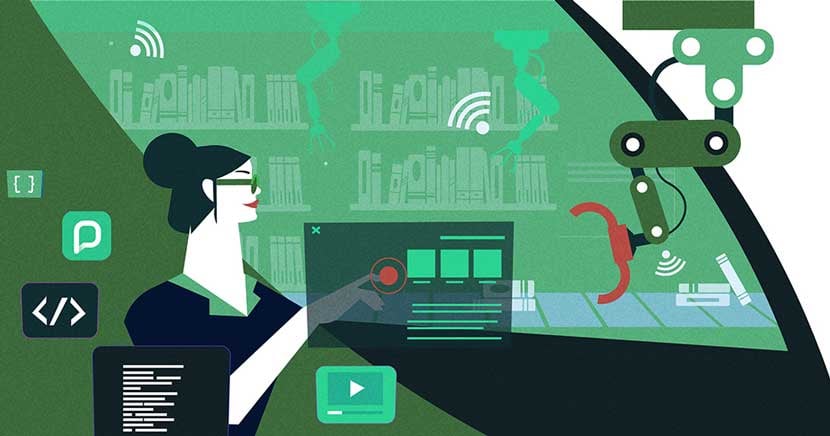While we love so much of what a 21st-century library has become, it’s inevitable that evolution will continue for this beloved institution. After all, as society’s needs shift and change, so, too, will the library that serves them. And in these highly digital, post-pandemic, gig-economy times, the conditions are as ripe as they’ve ever been for change to library design.
The needs of tomorrow’s library patrons might be different than those they have today, so how can library design offer everything they need?
In the next 10 years, it’s very likely that your local library will be unrecognizable — largely due to the changing nature of content. As content access moves to digital or online formats, the spatial needs for physical materials are reduced, leaving an opportunity for library designs to focus less on basic book storage and more on user experience.
One prime example: with PressReader’s digital newsstand, patrons can still access thousands of digital magazines, newspapers and journals. Imagine what sort of square footage the equivalent in physical copies might be — and what the library of the future can do with that space instead.
Though librarians are the keepers of so much precious history, there’s plenty to get excited about as we move forward, too. Here’s what the library of 2030 might look like.
See also:
Space for concentration and conversation
While the cliché silence at a library can help some people get that reading or writing done, more academics are realizing the value of collaborative discussion and social reflection to productivity as well. (Some studies have even found that certain people are more productive with background noise.)
It’s why libraries of the future may offer more spaces for conversation or social coffee-shop-like environments, in addition to those traditional quiet zones. The Weston Library in Oxford already has a coffee shop and breakout rooms to accommodate those who do their studies in more social settings.
Providing a variety of types of spaces for different types of working styles will only attract more patrons and users — particularly as remote work becomes more commonplace post-pandemic.
Technology and tools front and center

While books and special materials will always be an important part of the library’s services, the importance of having them front-and-center is likely to decline as libraries make space for other features, tools and content formats.
On the extreme end of this trend is the entirely bookless Idea Exchange library in Ontario. The glazed modern building features maker spaces, recording studios, a floating classroom and a theatre. The spruce-clad Helsinki Central Library, meanwhile, keeps 100,000 volumes of books on the top floor, but reserves the first two storeys of the building for a “civic living room” which offers spaces for the public to hang out, as well as 3-D printers and audio booths. At Hunt Library in North Carolina, there’s even a video game development lab.
Especially as more content becomes digitized, these buildings certainly ask an important question: what is the best use of physical space for patrons? Is it for storage of materials, or is it for community building and creation?
Smarter storage features
For those libraries who can’t go to quite the same extremes as the Idea Exchange, there are increasingly innovative storage solutions for book collections.
The robotic book retrieval system at University of Chicago’s Mansueto Library whisks away to access over three million books in the dense materials stacks that lurk out of the library’s main halls. (Helsinki has a bot, too, which retrieves anything that’s not included among the 100,000 volumes it keeps at patron reach.)
Furniture and features for modern work

From sit-to-stand desks to ample power sources, creating a space that can accommodate a full modern working day is increasingly important for libraries going forward.
The reality is, libraries aren’t just a place to find the next great read. They’re places to power through and get that report done, watch a webinar, access free WiFi, take notes on research, log in to a digital newsstand, and so on — and these activities require electronic devices.
Choosing furniture that allows for ergonomic and comfortable working conditions will make the library an even more attractive place for patrons looking for a place to buckle down and get their tasks done effectively and efficiently.
Sustainable architecture

Libraries are an essential element of civic infrastructure, and are often looked to as leaders in their communities. This position makes it all the more important for these organizations to champion sustainability when possible; architect Jeffrey M. Hoover, a professor in the Harvard Graduate School of Design, even makes sustainable LEED strategies a key learning objective in his Physical Library Futures course.
Charles Library at Philadelphia's Temple University, for instance, has a 47,300 square foot green roof, which contributes to the site’s stormwater management system. And with its own rainwater system, the Austin Central Library was able to help its community during a drought.
Instagrammability

The Tianjin Binhai Library receives over 10,000 visitors a day, thanks to its popularity on social media. Why all the hype? The futuristic atrium features jaw-dropping floor-to-ceiling shelving that looks incredible on camera, plus its inaccessible shelves are filled with images of books instead of the real thing.
While it may seem pandering to create a library around an “Instagram moment,” the wow factor of a space can translate into a real jump in users and visitors: Tianjin Library is now the city’s number one tourist attraction.
Of course, these are just broad predictions for the future of library design. Every region and demographic will have different needs, and the very best library design is the one that helps patrons access the content and services they require most. Download The Future of Libraries to learn more, or explore PressReader’s Pinterest gallery to glean more inspiration from beautiful libraries around the world.











